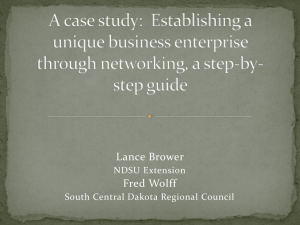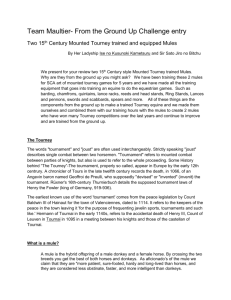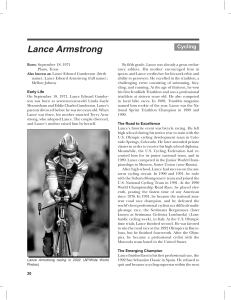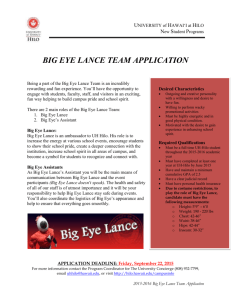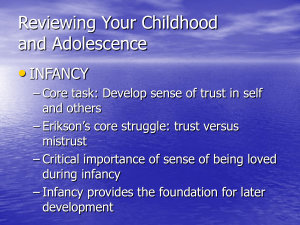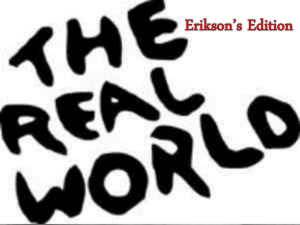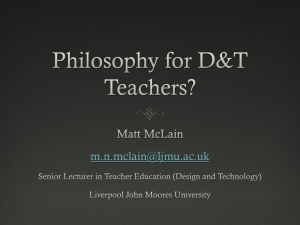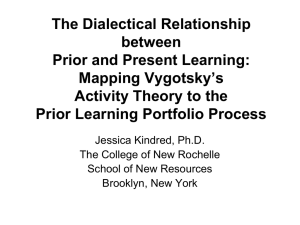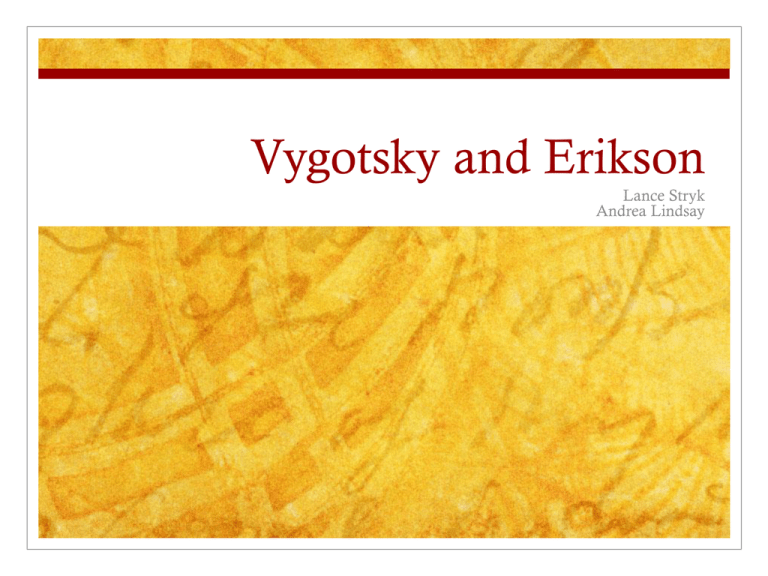
Vygotsky and Erikson
Lance Stryk
Andrea Lindsay
Vygotsky
Lev Semenovich Vygotsky
Born November 5, 1896; died June 11, 1934
As a Jew in Soviet Russia, he did not have much
opportunity for formal education past junior high, but
luckily was admitted into the Moscow University by the
Jewish lottery.
Enrolled in both Shaniavsky University and Moscow
University, graduating from each simultaneously.
Late 1980s Vygotsky’s ideas became big in the United
States.
His best-known work, Thought and Language (1934), was
briefly suppressed as a threat to Stalinism
Erikson
Erik Erikson
Born June 15, 1902; Died May 4, 1994
His father abandoned the family before he was born
Erikson’s interest in identity came from his experiences in
school where he was teased for being Nordic (tall, blonde,
and blue-eyed) in his temple school and rejected in the
grammar school for being Jewish.
Earned a psychoanalysis certificate from the Vienna
Psychoanalytic Society
Held position at Harvard Medical School
Published books including Childhood and Society and The
Life Cycle Completed
Expanded on Freud’s Theory on the psychosexual aspects
of development
PLAY?
Vygotsky: play results when a child
created an imaginary world to realize
their unrealized desires.
Erikson: play is a function of the ego
to synchronize the self with the social
world.
PLAY!
Erikson’s Stages of
Development
Oral phase 1
Oral Phase 2
A child bites and grasps for objects. A child will follow a finger relatively well and without
extensive coaxing, and will turn their head in an attempt to find a loud unknown sound. In
the two Oral phases a child begins to form the beginnings of trust vs. mistrust.
Anal Phase
A child simply takes in the world through their perceptions and exhibits minimal
interactions outside of basic reflexes.
A child will hold object in their hands ‘stubbornly’ and will often throw the object at times.
The child shows an opposite of action, at times doing one thing then turn around and so the
complete opposite. Build a tower and then destroy it or cuddle one moment and then want
to run away the next. A child begins to experience shame (not looking good in other
peoples eyes) and doubt (the realization that they are not as powerful as they might think).
Phallic Phase
A child will imagine themselves in a role that they do not, in real life, hold. A child may hit
or attack another person with physical violence or with their voices such as yelling or
talking aggressively. A child begins to have initiative, planning, setting goals, and finding
ways to achieve them, as well as guilt (that their desires go against what society dictates as
acceptable).
Desirous Play and Thoughtful
Play
Desirous Play: a
play based on the
retention/elimination idea in Erikson in
which a
child will act based on their
most immediate desire correlated with
interests in their immediate surroundings.
Thoughtful Play:
a play characterized by thought
and self control in play following Erikson’s
phallic stage correlated with an interest in
other external things outside the immediate
environment
Vygotsky Theory on
Interest
Interest-
the expressions
of the child’s organic
needs where “organic
needs” are the stimulus
and desires to interact
which those stimuli with
the “organic” body.
The Great Mover
We believe that Language is the prime mover in three
key movements.
1.
The move from the Anal to the Phallic Stage
2.
The move from desirous to thoughtful play
3.
The move from and interest in their immediate
environment to an external environment.
Language and Tools
Vygotsky believed that language was synonymous with
thought.
He also believed that language allowed children to
move from technical thought (practical intelligence with
the use of tools) to internal thought.
A child is able to use a tool (schemas) before processing
speech. A tool could be a chair it to sit in. It is when
the child begins to acquire speech that they plan things
and are capable of a greater range of tasks with this
speech as well as using their acquired schemas. As they
grow older a child will internalize the speech which
results in inner-speech.
Vygotsky’s theory of concept
development
Phase I: Syncretic Heaps- a group of objects
which are linked together by what a
child
perceives to be similar without any
real
world link.
A child begins by using trial and error to find
similarities with objects in their immediate reach.
The organization then extends to the field of view
of the child where a child groups them based on
their relation to space and time. Finally, a child
will group elements based on different elements
taken from previously formed groups.
Phase II: Thinking in Complexes.
A complex would include objects which are similar based on the
concrete and factual bonds which exist in the real world.
This begins with the associative type where a “family name” is extracted
from different “proper names”.
A child then forms collections which are the realization that the objects
are similar in some traits and dissimilar in others, but participate in the
same functional relation.
Chain complexes result from the linking of complexes in a single line of
thought in which the specific traits linked might not be the same.
This type of thinking becomes more fluid and eventually reached diffuse
complexes characterized by the fluid chain complexes.
Eventually a child will form pseudo-complexes which are similar to adult
concepts, but on a lower level.
Our Hypothesis
Our Hypothesis: There is a natural move from, what
we refer to as, desirous play to thoughtful play that
coincides with the acquisition of language. This shift
coincides with Erikson’s stage theory especially
between the anal and phallic stages where a child
masters his/her own body and begins to actively
engage and influence the external world
Guiding Questions
Is language involved in the move between desirous and thoughtful
play?
What is the purpose of desirous play?
Language is not necessary for this move to occur as in the example of
sign language.
Concept or pseudoconcept formation is key however.
The move from anal to phallic stage is facilitated and maybe a result or
forming pseudoconcepts.
To formulate and enhance motor skills associated with the child’s body.
To provide confidence in self over the body.
What are the indicators of this move?
When a child is confident in his/her ability over the body (doesn’t need
to consciously think about movement).
When a child acquires enough pseudoconcepts to begin mastering the
environment.
Terms to Know
Desirous Play
Thoughtful Play
Pseudo-Concept
Observer
Withdrawn Observer
The Setting
Location
The Grant House
4321 Myerwood Lane, Dallas, TX 75244
Living Room and “School House”
Time
March 25, 2011
Procedure
Researchers will enter the chosen environment with the child they plan to
observe.
One observer will serve as the withdrawn observer, taking a position outside
of direct contact with the child. This observer will record the interactions
and exchanges between the child and “participant observer”.
The other observer will take a position within range of the child; if the child
is to engage one of the observers, they will become a participant observer,
reacting to the child’s actions without purposefully directing the child’s
behavior.
If the child does not approach either of the observers, each with record their
own observations, to be compared later.
During the course of the observations the observers will rank the children
on various aspects so as to provide a more clear picture of the language
level, developmental stages (according to Erikson), and the appearance of
thought in play (resulting from time attributed to certain tasks).
The Subjects
Michael: 4 Year Old Male
Asks if Lance is looking
Hits toys together (lego figures)
Babbling noises and giggling
can’t interpret them
“wha-sis-a-wa-wa”
repeated phrase
“he’s the leader”
“can we start?”
“don’t use all of that”
rules
Michael “You can use that”
um-um
Takes on role “I want to be the
Romans”
asks Lance his opinion
Sets rules
“but this is a woman’s sword
(roman)”
“No I’m the Romans” sets the rules
Able to tell situations in the past
talks about Kelly leaving the airport
“I was there”
Picks up talk from brother
downstairs
Lance interacts with Michael
talks to brother
“which sword?”
Separates toys
“these are mine”
Picks one up, puts it down
Michael: 4 Year Old Male
“shorts” talk
Michael’s horses are lined up like Lance’s
“this guy is yours”
Animates soldiers, man in cape
Michael’s toys are in piles; Lance’s toys are in lines
“No” as Lance tries to take horse; “all those
are Kevin’s”
“since you have more people, I get doubles
[weapons]”
gets up to look at brother and friend
downstairs
“don’t have carrots, need carrots” ??
counts soldiers
“half face” puts figure in a certain way
Lance “can’t have doubles”
“ok, I’m ready, time to face the
Romans”
“I need another weapon”; “no not that
one”
“is this a weapon?” Michael holds up figure
with stick in hand to Lance; Lance, “It could
be”; Michael, “it’s not”
continues to align men
looking for something
Concentration
looks for spears and ax
four of Michael’s men lined up; all others are
on the ground facing Lance’s army
points to them (as if counting) but gets the
number wrong
“you have seven” there are 18
“I have 18, you have six, no you have five,
no I think about six or five”
“look at this tiny little horse”; Lance says,
“That’s a donkey”; Michael replies, “No it’s
a horse”
he has 13
bowman needs bows
Michael lines up his men like Lance
“not like that” attention to detail
“that’s mine”
“you go first”
he changes his mind and says “I go
first” he dies
asks Lance “do you love him?”
“no no you have to hit the same guy” rules
“I killed your favorite guy”
“my swords are God”
doesn’t let Lance have a turn
Michael… Again
“remember that big snake we saw”
shows arms to show “bigness”
“and it was tiny, and it was big and all flat”
Shows Lance everything
“killed my favorite thing, he’s not my favorite”
“he’s nobody, he’s… David”
“they both have a shield” bashes them together
“now he’s my leader”
25 minutes long
“who goes first?”
“whose your favorite?” to Lance takes the
favorite figure
“whose your other favorite?”
“you killed my leader”; kills leader
“is this your leader?” picks him up; “he’s
gone”
on task for a long period of time
checks on brother to “see what they’re doing”
Collin: 2 Year Old Male
Collin reaches for the train and throws it
Collin carrying around bear and crackers
Picks up toy train and throws it on the ground
Picks both up
Kicks it
Watches Michael play with train on the track
Takes Lance’s train and makes noises
Makes grunting noises
Looks at track; sits down
Jams train through tunnel
Takes train and uses it on the track
Watches Michael go through it
Puts train on top of tunnel
Watches Michael puts the trains together, tries to do
the same thing
Collin sits and watches Lance
Back and forth
Looks at train, then back to track
Falls over “ow”
Michael and Collin playing together
Collin: 2 Year Old Male
Goes through tunnel
listens to noise
Babbling (but binky is in mouth)
plays hide with Andrea behind the
ottoman
Crashes trains together
Lay on the ground, head against
footrest
Plays hide and seek with
Andrea again
throws 2 trains at the same time
Hits track
makes noises while he’s playing
with the trains
Takes snacks and drink and leaves
switches trains every couple
seconds
Watching sister
About ten minutes
Talks to self
Crashes toys together; shows
Lance
Does it repeatedly
Laughs at trains
Looks at door when it is opened
“where’d he go?”
throws train
put them together by the wheels
lifts up train tracks and show
Lance and then puts them back
down
tries to piece tunnel together
but it doesn’t work
keeps trying to fix it
grabs snacks and shows to Lance
Problems or
Circumstances
Overall, our hypothesis was correct. This is due to
the fact that we based it on previous observations and
correlated it to our own theories.
For thinking between the two types of play there is
no automatic switch from desirous to thoughtful
play. It is more of a gradual switch.
Look Back
Our Hypothesis: There is a natural move from, what
we refer to as, desirous play to thoughtful play that
coincides with the acquisition of language. This shift
coincides with Erikson’s stage theory especially
between the anal and phallic stages where a child
masters his/her own body and begins to actively
engage and influence the external world
Improvements
As with most, if not all studies, we want a larger
range of kids i.e. a bigger sample size with variation
in the gender.
Ideally we want to have children composed of the
various stages of language development (simple
babbling, one-word phrases, etc.) and see if there is a
true correlation between language and the transition
between the various elements examined.
?
Questions?

